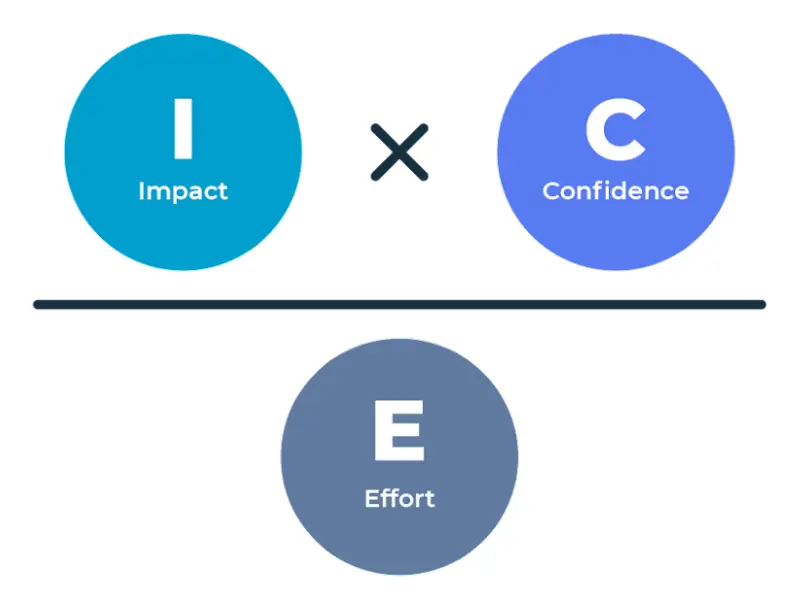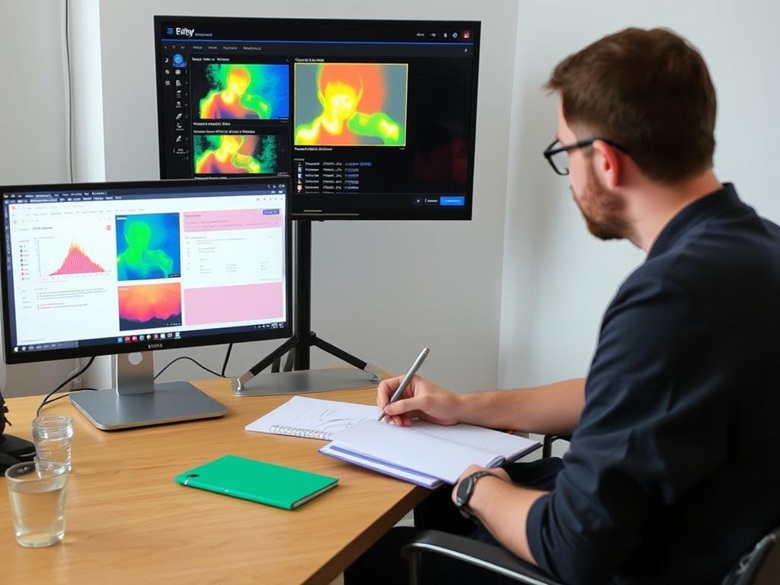Mastering CRO: A Complete Guide to Becoming a Conversion Rate Optimization Specialist

Author: Siva Prakash
In today's digital world, just having website traffic isn't enough. What really counts is turning that traffic into actions like buying, signing up, or getting leads. This is where Conversion Rate Optimization (CRO) specialists shine. They use data and tests to turn visitors into customers. If you want a rewarding career in digital marketing, CRO might be for you. This guide will cover everything you need to know to succeed in this field.

What is Conversion Rate Optimization (CRO)?
Conversion Rate Optimization is about making more website visitors take the actions you want. This could be buying something, filling out a form, or subscribing to a newsletter. It's all about reaching your business goals. At its heart, CRO is about understanding how people use your site. It's about what actions they take and what stops them from doing more. By fixing these issues, CRO experts can boost your site's performance without bringing in more visitors.
The CRO Formula
The basic formula for calculating conversion rate is:
Conversion Rate = (Number of Conversions / Total Number of Visitors)- 100%
For ex, if your site gets 10,000 visitors in a month and 200 buy something, your conversion rate is 2%.
Why CRO Matters
Conversion rate optimization is key for several reasons:
The Evolution of CRO: From Guesswork to Data Science
Conversion rate optimization has changed a lot over the past 20 years, like below
Early 2000s: The Guesswork Era - Back then, CRO was mostly based on guesses and common sense. Marketers made changes based on what they thought would work, without much data to back it up.
2010s: The Testing Revolution - With tools like Google Analytics and A/B testing platforms, CRO became more about data. Specialists started testing ideas and measuring results.
2020s: The AI & Personalization Era - Now, CRO uses advanced analytics, tracks user behavior, and AI for personalized experiences. This helps maximize conversion chances for each visitor.
This change shows a bigger shift in digital marketing toward science and data. Today's CRO experts need to handle complex data and understand human psychology and user experience.
Essential CRO Metrics Every Specialist Should Track
To improve conversion rates, specialists need to watch several key metrics. These metrics help understand user behavior and how well the site is doing
| Metric | Definition | Why It Matters |
|---|---|---|
| Conversion Rate | Percentage of visitors who complete a desired action | Primary indicator of website effectiveness |
| Bounce Rate | Percentage of visitors who leave after viewing only one page | Indicates possible issues with relevance or user experience |
| Exit Rate | Percentage of visitors who leave from a specific page | Helps identify problematic pages in the conversion funnel |
| Average Session Duration | Average time users spend on your site | Shows engagement level and content relevance |
| Pages Per Session | Average number of pages viewed during a session | Measures depth of engagement with your content |
| Average Order Value (AOV) | Average amount spent per transaction | Key revenue metric that CRO can directly impact |
| Cart Abandonment Rate | Percentage of users who add items to cart but don't complete purchase | Reveals friction in the checkout process |
Successful CRO specialists track these metrics together. They see how they tell the story of the user journey. This way, they can make better optimization strategies.
How CRO is Evaluated: Quantitative vs. Qualitative Analysis
Effective conversion rate optimization needs both quantitative and qualitative data analysis
Quantitative Analysis
Quantitative analysis looks at numbers that can be measured and analyzed.
Qualitative Analysis
Qualitative analysis looks at the "why" behind user behavior. like,
The Power of Combined Approaches
The best CRO strategies use both quantitative and qualitative insights. For example:
Quantitative data might show users are leaving a checkout page fast (what is happening). Qualitative research might say they find the form too hard or are surprised by shipping costs (why it's happening).
This mix of approaches helps CRO specialists create better solutions to conversion problems.
Essential Tools in a CRO Specialist's Arsenal
Successful CRO specialists use many tools to gather data, conduct tests, and make optimizations
Analytics Tools - Google Analytics | Adobe Analytics | Mixpanel | Amplitude | Heat Map
Testing & Optimization Tools - Optimizely | VWO (Visual Website Optimizer) | AB Tasty
User Behavior Tools - Hotjar | Crazy Egg | FullStory | MouseFlow | Lucky Orange
Choosing the Right Tools
When picking CRO tools, think like below listed
The best CRO specialists know how to use data from tools. They turn this data into actions that improve your site.
Perfect Your A/B Testing Process
Ask for our A/B Testing Hypothesis Template and Testing Calendar to plan your experiments.
Real-World CRO Success Stories
Learning from real CRO success stories can be very helpful. Here are three examples that show how CRO can make a big difference:
Case Study 1: E-commerce Checkout Optimization
Challenge
An online store had a 78% cart abandonment rate, much higher than the average of 69%.
CRO Approach
Results:
The cart abandonment rate went down to 62%. This led to a 35% increase in sales and a $1.2 million boost in annual revenue.
Case Study 2: SaaS Landing Page Optimization
Challenge
A B2B SaaS company had a low trial sign-up rate of 1.8% from their landing page.
CRO Approach
Results:
The trial sign-up rate jumped to 4.3%, a 139% increase. This led to a 42% more qualified leads and a 28% more customers.
Case Study 3: Lead Generation Form Optimization
Challenge
A financial services company had a 12% form completion rate for their mortgage pre-approval application.
CRO Approach
Results:
The form completion rate soared to 28%, a 133% jump. The quality of leads also went up, with a 45% higher conversion rate to actual mortgage applications.
These examples show how CRO can greatly improve conversion rates in different industries. As a CRO Optimization Specialist, you'll need to analyze problems, develop solutions, and implement them to achieve similar results.
Why Online Businesses Must Prioritize CRO
In today's digital world, CRO is key for online businesses. Here's why
1. Cost-Effectiveness vs. Customer Acquisition
Getting new visitors through ads or social media can be pricey. CRO focuses on making the most of your current traffic, making it a smart choice. It's cheaper to keep an existing customer than to get a new one. CRO helps you maximize every visitor to your site.
2. Long-term ROI of Iterative Optimization
CRO is different from one-time marketing efforts. It offers ongoing benefits through continuous improvement:
3. Competitive Advantage in Saturated Markets
In markets full of similar products or services, CRO can give you an edge:
Without CRO
With CRO
4. Data-Driven Decision Making
CRO promotes a culture of testing and making decisions based on data. This reduces the impact of opinions and assumptions. It focuses on what users actually do and what they prefer.
5. Enhanced User Experience
Good CRO is about making experiences better, not just getting users to convert. It's about making it easier for users to achieve their goals. By focusing on CRO, businesses can create a cycle of improvement. This leads to higher conversion rates, happier customers, and steady growth.
Learn From Real CRO Success Stories
Ask for our collection of 10 detailed CRO case studies with before/after metrics and strategies.
Starting a Career as a CRO Optimization Specialist
If you want to start a career in CRO, here's a guide to help you:
Essential Skills for CRO Specialists
Technical Skills
Analytical Skills
Soft Skills
Entry-Level Positions and Career Progression
This entry-level role focuses on gathering data, basic analysis, and helping with test setup.
This mid-level role involves creating hypotheses, conducting tests, and analyzing results.
This advanced role includes developing CRO strategies, managing complex tests, and making recommendations based on deep analysis.
This leadership role oversees CRO teams, develops long-term strategies, and aligns CRO with business goals.
Building Your CRO Portfolio
To stand out, create a portfolio that shows your CRO skills:
Even without professional experience, you can build a portfolio. Optimize your own site, work on open-source projects, or help non-profits or small businesses for free.
Website Observation and Analysis Techniques
Being able to deeply analyze websites is key for CRO specialists. They need to find conversion barriers and opportunities. Here are some important techniques:
Quantitative Analysis Tools
Google Analytics
Google Analytics helps identify:
Heatmaps and Session Recordings
Tools like Hotjar and Crazy Egg offer visual data on:
Qualitative Research Methods
Technical Audits
Technical issues can really hurt conversion rates. Check:
Performance
Usability
Conversion Funnel Analysis
Map out your conversion funnel and find drop-off points:
For each funnel stage, ask:
Competitive Analysis
Study competitors' sites to find:
By using these analysis techniques, CRO specialists can deeply understand user behavior. They can then find the best optimization opportunities.
A/B Testing: The Core of CRO
A/B testing, or split testing, is key to improving conversion rates. It compares two or more webpage versions to see which one gets more conversions.
The A/B Testing Process
Start by gathering data to find what's holding you back and what can be improved.
Make a clear hypothesis. It should say like
For example: "Changing our CTA button color from green to orange might increase clicks because orange contrasts better with our blue theme."
Decide what to test and create the variations. Think about:
Test Implementation
Use a tool like Optimizely, VWO, or Google Optimize to set up the test. Make sure to:
Results Analysis
After the test is done, look at the results:
Implementation and Iteration
Put the winning version into action. Use what you learned to plan your next test. CRO is a never-ending journey of getting better.
Statistical Significance in A/B Testing
Understanding statistical significance is key for A/B testing:
Statistical significance shows if the difference in results is real or just chance. Most aim for 95% confidence to call a winner.
Things that affect significance include:
Common A/B Testing Mistakes to Avoid
Even pros can make these mistakes:
By following a solid A/B testing process and avoiding these mistakes, CRO experts can improve conversion rates and boost ROI.
Master Website Analysis for CRO
Join our Website Analysis Course with 50+ points to find optimization chances.
Data-Driven Decision Making in CRO
Successful CRO Optimization Specialists rely on data, not opinions, to guide their optimization strategies. Here's how to develop a data-driven approach:
Building a CRO Roadmap
A CRO roadmap aligns optimization efforts with business goals and provides a structured approach to testing. Key components include:
Prioritizing Tests with the ICE Framework

With limited resources, it's essential to prioritize optimization opportunities. The ICE framework helps evaluate tests based on three factors:
Impact (I)
How much improvement could this change create if successful?
Score 1-10, where 10 = highest
Confidence (C)
How confident are you that this change will be successful?
Score 1-10, where 10 = highest
Ease (E)
How easy is this change to implement and test?
Score 1-10, where 10 = easiest
Calculate the ICE score by adding or multiplying the three factors. Higher scores indicate higher priority tests.
| Test Idea | Impact (1-10) | Confidence (1-10) | Ease (1-10) | ICE Score | Priority |
|---|---|---|---|---|---|
| Simplify checkout form | 8 | 9 | 4 | 288 | 1 |
| Redesign product page | 9 | 6 | 3 | 162 | 3 |
| Add trust badges | 5 | 7 | 9 | 315 | 2 |
| Change button color | 3 | 5 | 10 | 150 | 4 |
Scaling CRO for Enterprise Websites
For large websites with high traffic volumes, CRO specialists can implement more sophisticated approaches:
Measuring and Communicating CRO Success
To show the value of CRO and keep support, specialists must measure and share results well:
Key Metrics to Track
Effective Reporting Practices
By using a systematic, data-driven approach to CRO, specialists can show clear improvements. They can prove the strategic value of optimization efforts.
Advanced CRO Strategies for Big Websites
As websites grow, CRO specialists need more advanced strategies to make meaningful changes:
Personalization Engines
Personalization lets websites give users tailored experiences based on their attributes, behaviors, and preferences:
Popular personalization platforms include Dynamic Yield, Adobe Target, Optimizely Web Personalization, and Evergage.
Multivariate Testing vs. A/B Testing
A/B testing compares two versions of a single element. Multivariate testing looks at how multiple variables work together:
A/B Testing
Multivariate Testing
Cross-Department Collaboration
Effective enterprise CRO needs teamwork across different teams:
Marketing + CRO
IT/Development + CRO
Design + CRO
Customer Journey Optimization
Advanced CRO focuses on improving the whole customer journey, not just individual pages:
By using these advanced strategies, CRO specialists can make big improvements on large, complex websites. They can handle diverse user segments and conversion paths.
Essential Tools and Resources for CRO Specialists
Free vs. Paid CRO Tools Comparison
| Category | Free Tools | Paid Tools | Key Considerations |
|---|---|---|---|
| Analytics | Google Analytics, Microsoft Clarity | Adobe Analytics, Mixpanel, Amplitude | Data accuracy, integration capabilities, reporting flexibility |
| A/B Testing | Google Optimize, Optimizely (limited) | VWO, Optimizely, AB Tasty, Convert | Ease of implementation, statistical rigor, segmentation capabilities |
| Heatmaps & Recordings | Microsoft Clarity, Hotjar (limited) | Hotjar, Crazy Egg, FullStory, MouseFlow | Sample size, retention period, privacy compliance |
| Surveys & Feedback | Google Forms, SurveyMonkey (limited) | Qualaroo, Hotjar, UserTesting | Targeting options, response rates, analysis features |
| Form Analytics | Microsoft Clarity (basic) | Formisimo, Hotjar, FullStory | Field-level insights, error tracking, abandonment analysis |
| Personalization | Limited options | Dynamic Yield, Adobe Target, Optimizely | Segmentation capabilities, ease of use, integration with existing stack |
Essential Templates for CRO Specialists

CRO Audit Template - A structured framework for evaluating website conversion performance and identifying optimization opportunities.
Hypothesis Documentation - A template for clearly documenting test hypotheses, including rationale, expected outcomes, and success metrics.
Experiment Results Log - A standardized format for recording test results, insights, and recommendations for future optimization.
Recommended Learning Resources
Books
Ethical Considerations in CRO
While CRO aims to increase conversions, ethical practitioners balance business goals with user needs and ethics:
Avoiding Dark Patterns
"Dark patterns" are sneaky UX tricks that try to make users do things they might not want to. Ethical CRO experts steer clear of:
Ethical CRO Practices
- Clear, honest messaging about products/services
- Transparent pricing without hidden fees
- Easy account cancellation processes
- Respecting user privacy preferences
- Focusing on genuine value delivery
Dark Patterns to Avoid
- Misleading information or false scarcity
- Hidden costs revealed only at checkout
- Making cancellation deliberately difficult
- Pre-checked boxes for additional services
- Guilt-tripping users who decline offers
Balancing Short-Term Wins with Brand Integrity
Aggressive tactics might boost short-term conversions. But they can harm your brand's long-term reputation and customer relationships. "The goal of CRO isn't just to get the conversion. it's to create satisfied customers who will return and recommend your brand to others."
Ethical CRO specialists focus on:
Privacy and Data Ethics
CRO relies heavily on user data. Specialists must follow privacy laws and use data ethically:
By sticking to ethical principles, CRO specialists can achieve meaningful business results. They do this while keeping user trust and brand integrity intact—ensuring sustainable growth, not just quick spikes in conversions.
Conclusion: Your Path to Becoming a CRO Optimization Specialist
Conversion rate optimization is a highly valuable skill in today's digital marketing world. As businesses focus more on maximizing existing traffic value, the need for skilled CRO specialists keeps growing.
Actionable Steps to Get Started
Start with the basics of web analytics, user experience, and testing methodologies through courses, books, and blogs.
Learn to use key CRO tools like Google Analytics, heatmap software, and A/B testing platforms.
Apply CRO principles to your own website or volunteer to help small businesses or non-profits optimize their sites.
Pursue relevant certifications from Google Analytics, CXL Institute, or testing platform providers.
Document your optimization projects, including hypotheses, methodologies, and results.
Join CRO communities, attend webinars, and participate in industry discussions.
The field evolves rapidly, so commit to continuous learning and experimentation.
The Future of CRO
As you start your CRO career, watch for these new trends:
By learning the basics of CRO and staying up-to-date with new tech, you can have a fulfilling career. You'll help businesses meet their goals and improve user experiences. "The best CRO specialists are always learning and trying new things. They aim to understand what drives user behavior." This guide should give you a good start on your CRO journey. Remember, becoming an expert takes practice, experimentation, and ongoing learning. Good luck on your path!
Ready to Master Conversion Rate Optimization?
Join our complete CRO Specialist course and start your journey toward becoming an in-demand CRO professional today.

